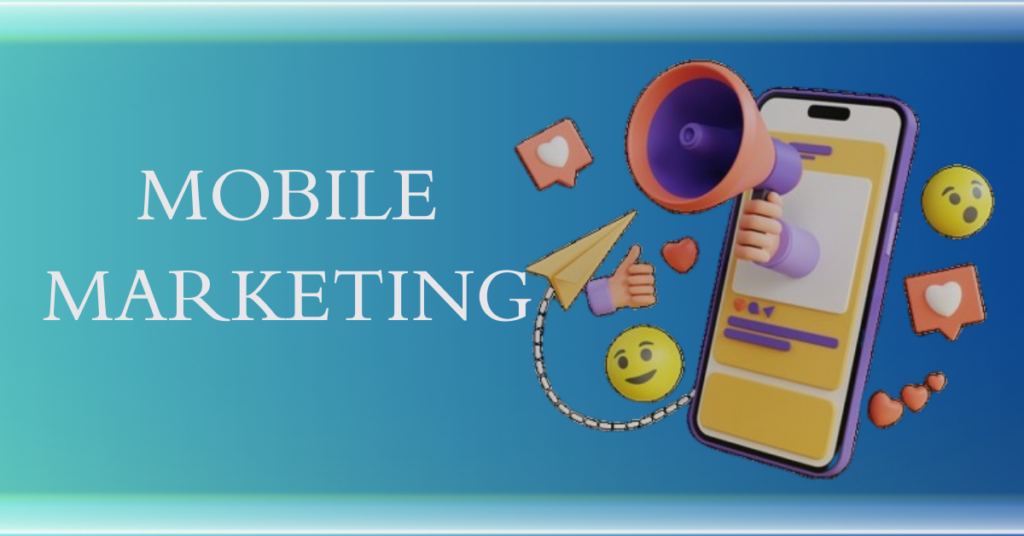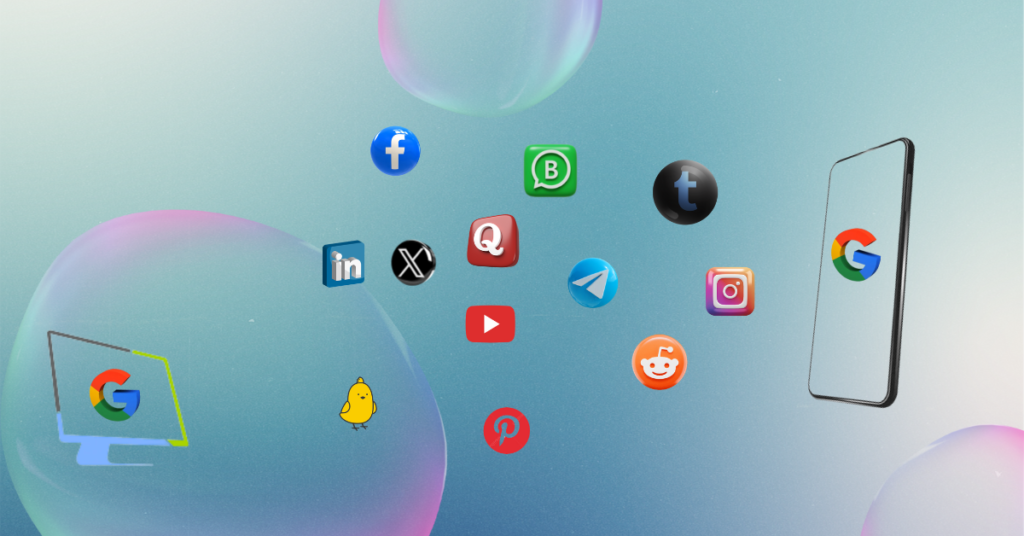Mobile Marketing

Mobile marketing is a multi-channel online marketing technique that focuses on reaching specific audiences through websites, e-mail, SMS and MMS, social media or mobile applications on their smartphones, feature phones, tablets or any other related device.
Mobile marketing can provide customers with time and location-sensitive, personalized information that promotes goods services, appointment reminders, and ideas. In a more theoretical manner, Spark Sphere and IT defines mobile marketing as “any marketing activity conducted through ubiquitous networks, to which consumers are constantly connected using a personal mobile device”.
Types of Mobile Marketing
SMS Marketing
SMS marketing has both inbound and outbound marketing strategies. Inbound marketing focuses on lead generation, and outbound marketing focuses on sending messages for sales, promotions, contests, donations, television program voting, appointment and event reminders.
There are 5 key components to SMS marketing:
Sender ID
A sender ID is a name or number that identifies who the sender is. For commercial purposes, virtual numbers, short codes, SIM hosting, and custom names are most commonly used and can be leased through bulk SMS providers.
- Shared Virtual Numbers
- Dedicated Virtual Numbers
- Short codes
- SIM hosting
- Custom Sender ID
Message Size
The message size will then determine the number of SMS messages that are sent, which then determines the amount of money spent on marketing a product or service. Not all characters in a message are the same size.
Content Structure
Special elements that can be placed inside a text message include:
- UTF-8 Characters: Send SMS in different languages, special characters, or emojis
- Keywords: Use keywords to trigger an automated response
- Links: Track campaigns easily by using shortened URLs to custom landing pages
- Interactive Elements: Pictures, animations, audio, or video
Texting is simple, however, when it comes to SMS marketing – there are many different content structures that can be implemented. Popular message types include sale alerts, reminders, keywords, and multimedia messaging services (MMS).
- SMS Sales Alerts
- SMS Transaction Alerts
- SMS Reminders
- SMS Keywords
Spam Compliance
Similar to email, SMS has anti-spam laws which differ from country to country. As a general rule, it’s important to obtain the recipient’s permission before sending any text message, especially an SMS marketing type of message. Permission can be obtained in a myriad of ways, including allowing prospects or customers to tick a permission checkbox on a website, filling in a form, or getting a verbal agreement.
In most countries, SMS senders need to identify themselves as their business name inside their initial text message. Identification can be placed in either the sender ID or within the message body copy. Spam prevention laws may also apply to SMS marketing messages, which must include a method to opt out of messages.
One key criterion for provisioning is that the consumer opts in to the service. The mobile operators demand a double opt-in from the consumer and the ability for the consumer to opt-out of the service at any time by sending the word STOP via SMS. These guidelines are established in the CTIA Playbook and the MMA Consumer Best Practices Guidelines which are followed by all mobile marketers in the United States. In Canada, opt-in became mandatory once the Fighting Internet and Wireless Spam Act came into force in 2014.
Message Delivery
Simply put, SMS infrastructure is made up of special servers that talk to each other, using software called Short Message Service Centre (SMSC) that use a special protocol called Short Message Peer to Peer (SMPP).
Through the SMPP connections, bulk SMS providers (also known as SMS Gateways) like the ones mentioned above can send text messages and process SMS replies and delivery receipts.
When a user sends messages through a bulk SMS provider, it gets delivered to the recipient’s carrier via an ON-NET connection or the International SS7 Network.
- SS7 Network
- ON-NET Routing
- Grey Routing
- Hybrid Routing
- SMS Service Providers.
MMS Marketing
Multimedia Message Service mobile marketing can contain a timed slideshow of images, text, audio and video. This mobile content is delivered via Multimedia Message Service. Nearly all new phones produced with a color screen are capable of sending and receiving standard MMS message. Brands are able to both send (mobile terminated) and receive (mobile originated) rich content through MMS A2P (application-to-person) mobile networks to mobile subscribers. In some networks, brands are also able to sponsor messages that are sent P2P (person-to-person).
A typical MMS message based on the GSM encoding can have up to 1500 characters, whereas one based on Unicode can have up to 500 characters. Messages that are longer than the limit are truncated and not concatenated like an SMS.
Good examples of mobile-originated MMS marketing campaigns are Spark Sphere Digital Marketer ongoing campaigns at Digital Marketer venues, where the brand allows the consumer to send their mobile photos to the LED board in real-time as well as blog their images online.
Push Notifications
Push notifications were first introduced to smartphones by Apple with the Push Notification Service in 2009.[ For Android devices, Google developed Android Cloud to Messaging or C2DM in 2010. Google replaced this service with Google Cloud Messaging in 2013. Commonly referred to as GCM, Google Cloud Messaging served as C2DM’s successor, making improvements to authentication and delivery, new API endpoints and messaging parameters, and the removal of limitations on API send-rates and message sizes. It is a message that pops up on a mobile device. It is the delivery of information from a software application to a computing device without any request from the client or the user. They look like SMS notifications but they reach only the users who installed the app. The specifications vary for iOS and Android users. SMS and push notifications can be part of a well-developed inbound mobile marketing strategy.
According to mobile marketing company Leanplum, Android sees open rates nearly twice as high as those on iOS. Android sees open rates of 3.48 percent for push notification, versus iOS which has open rates of 1.77 percent.
App-Based Marketing
With the strong growth in the use of smartphones, app usage has also greatly increased. The annual number of mobile app downloads over the last few years has exponentially grown, with hundreds of billions of downloads in 2018, and the number of downloads expecting to climb by 2022. Therefore, mobile marketers have increasingly taken advantage of smartphone apps as a marketing resource. Marketers aim to optimize the visibility of an app in a store, which will maximize the number of downloads. This practice is called App Store Optimization (ASO).
There is a lot of competition in this field as well. However, just like other services, it is not easy anymore to rule the mobile application market. Most companies have acknowledged the potential of Mobile Apps to increase the interaction between a company and its target customers. With the fast progress and growth of the smartphone market, high-quality Mobile app development is essential to obtain a strong position in a mobile app store.
The term app marketing has not yet been defined in a unified scientific definition and is also used in various ways in practice. The term refers on the one hand to those activities that serve to generate app downloads and thus attract new users for a mobile app. In some cases, the term is also used to describe the promotional sending of push notifications and in-app messages.
Here are several models for App marketing.
1. Content embedded mode For the most part at present, the downloading APP from APP store is free, for APP development enterprise, need a way to flow to liquidate, implantable advertising and APP combines content marketing and game characters to seamlessly integrating user experience, so as to improve advertising hits. With these free downloading apps, developers use in-app purchases or subscription to profit.
2. Advertising model advertisement implantation mode is a common marketing mode in most APP applications. Through Banner ads, consumer announcements, or in-screen advertising, users will jump to the specified page and display the advertising content when users click. This model is more intuitive, and can attract users’ attention quickly.
3. User participation mode is mainly applied to website transplantation and brand APP. The company publishes its own brand APP to the APP store for users to download, so that users can intuitively understand the enterprise or product information better. As a practical tool, this APP brings great convenience to users’ life. User reference mode enables users to have a more intimate experience, so that users can understand the product, enhance the brand image of the enterprise, and seize the user’s heart.
4. The shopping website embedded mode is the traditional Internet electric business offering platforms in the mobile APP, which is convenient for users to browse commodity information anytime and anywhere, order to purchase and order tracking. This model has promoted the transformation of traditional e-commerce enterprises from shopping to mobile Internet channels, which is a necessary way to use mobile APP for online and offline interactive development, such as Amazon, eBay and so on. The above several patterns for the more popular marketing methods, as for the details while are not mentioned too much, but the hope can help you to APP marketing have a preliminary understanding, and on the road more walk more far in the marketing.
QR codes
Two-dimensional barcodes that are scanned with a mobile phone camera. They can take a user to the particular advertising webpage a QR code is attached to. QR codes are often used in mobile gamification when they appear as surprises during a mobile app game and directs users to the specific landing page. Such codes are also a bridge between physical medium and online via mobile: businesses print QR codes on promotional posters, brochures, postcards, and other physical advertising materials.
